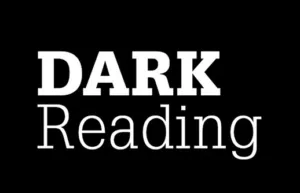Volt Typhoon attacks on US critical infrastructure
In the realm of cybersecurity, staying ahead of potential threats is an ongoing challenge. One such threat that has captured the attention of experts and enthusiasts alike is the Volt Typhoon Cyber Attack, known for its innovative use of “living-off-the-land” techniques. In this blog post, we’ll dive into the fascinating world of Volt Typhoon, its targets on US critical infrastructure, and the intriguing methods it employs to carry out its attacks.
Understanding Volt Typhoon
The Volt Typhoon is seen as a strong danger to American infrastructure as an electrical storm. This term has been making headlines in the cybersecurity landscape, particularly due to its advanced and stealthy nature. The Volt Typhoon is actually an alleged hacking group and it is believed that the group is backed by China and it appears to be primarily focused on stealing information from organizations in the United States that hold data related to the military or government and has the capability to disrupt critical infrastructure if it chooses to do so.
Living-Off-The-Land Techniques: Decoding the concept
Living-Off-The-Land Techniques use legitimate tools, software, and protocols that are commonly found on most computers or servers such as PowerShell, Windows Management Instrumentation (WMI) or the password-saving tool, Mimikatz, to carry out the attack. By doing so, attackers’ operations can be difficult to detect, especially if the organization is leveraging traditional security tools that search for known malware scripts or files. This approach is highly effective since it minimizes the need to introduce suspicious code that could raise alarms and attackers can execute malicious actions without arousing suspicion.
Targeting Critical Infrastructure
The primary cause for concern with Volt Typhoon lies in its focus on critical infrastructure. These essential systems, such as power plants, water treatment facilities, and transportation networks, play a vital role in modern society. An attack on such infrastructure could potentially lead to widespread disruption or chaos.
Mitigation and defense strategies
As the world becomes increasingly interconnected, the importance of defending against threats like the Volt Typhoon cannot be overstated. Organizations responsible for critical infrastructure must adopt a multi pronged approach to cybersecurity:
- Regular Security Audits – Frequent security assessments can identify vulnerabilities before attackers do, ensuring prompt mitigation.
- Employee Training – Properly trained staff can recognize phishing attempts and other malicious activities to reduce the chances of successful attacks.
- Segmentation – Isolating critical systems from less secure networks can limit the potential impact of an intrusion.
- Behavioral Analysis – Implementing tools that monitor and analyze unusual behavior patterns can help in detecting stealthy attacks.
- Up-to-Date Software – Regularly updating software and systems can mitigate known vulnerabilities that attackers might exploit.
In an age where technology shapes our world, the security of our critical infrastructure has never been more vital. The emergence of Volt Typhoon and its Living-Off-The-Land techniques reminds us that cyber threats can come in many forms. By understanding these techniques and implementing proactive security measures, we can better protect our essential systems, ensuring the continued well-being of our nation and its citizens.
References:
What is the Volt Typhoon? (jagranjosh.com)
What is Volt Typhoon? – GKToday
What Are Living Off the Land (LOTL) Attacks? – CrowdStrike
Volt Typhoon infiltrates U.S. Critical Infrastructure Organizations (cybertalk.org)
Paul Bergman runs a business strategy and cybersecurity consulting company in San Diego. He writes on cybersecurity and board management for both corporate and nonprofit boards.
- The Imperative for Cyber Talent on Corporate Boards - March 29, 2024
- Talking CMMC preparation - March 12, 2024
- Protecting Your Business: Strategies to Combat DNS Attacks - February 20, 2024
